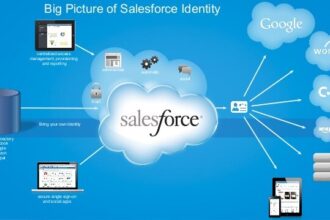There’s been a lot of buzz in the accounting and finance community recently about the upcoming change in revenue recognition guidelines from the FASB and IASB.
To date, most of the focus has been on the transactional accounting impact of the new guidelines.
- There’s been a lot of buzz in the accounting and finance community recently about the upcoming change in revenue recognition guidelines from the FASB and IASB.
- There’s been a lot of buzz in the accounting and finance community recently about the upcoming change in revenue recognition guidelines from the FASB and IASB.
There’s been a lot of buzz in the accounting and finance community recently about the upcoming change in revenue recognition guidelines from the FASB and IASB.
To date, most of the focus has been on the transactional accounting impact of the new guidelines. But Robert Kugel, SVP and Research Director at Ventana Research, recently published an article highlighting the impact the new guidelines can have on budgeting and planning.
Background – What’s Changing and When?
Revenue is one of the most important measures used by investors in assessing a company’s performance. However, the revenue recognition guidance offered under US GAAP vs. IFRS has differed and was in need of improvement. So for a number of years, the Financial Accounting Standards Board (FASB) and the International Accounting Standards Board (IASB) have been working to converge their guidelines for revenue recognition. In May of 2014, the two bodies issued their converged guidance under ASC 606 and IFRS 15.
Presently, US GAAP has complex, detailed, and disparate revenue recognition requirements for specific transactions and industries – including, for example, for software and real estate. As a result, different industries use different accounting for economically similar transactions.
According to the FASB, the objective of the new guidance is to establish the principles to report useful information to users of financial statements about the nature, timing, and uncertainty of revenue from contracts with customers. The new guidance does the following:
- Removes inconsistencies and weaknesses in existing revenue requirements
- Provides a more robust framework for addressing revenue issues
- Improves comparability of revenue recognition practices across entities, industries, jurisdictions, and capital markets
- Provides more useful information to users of financial statements through improved disclosure requirements
- Simplifies the preparation of financial statements by reducing the number of requirements to which an organization must refer
The new guidance on revenue recognition affects any reporting organization that either enters into contracts with customers to transfer goods or services or enters into contracts for the transfer of nonfinancial assets. The exception here is for those contracts that fall under the scope of other accounting standards (for example, insurance contracts or lease contracts).
Publicly held companies will need to apply the new revenue standard to annual reporting periods beginning after December 15, 2017. Nonpublic companies should apply the new revenue standard to annual reporting periods beginning after December 15, 2018.
Here is the five-step approach the FASB has developed to help companies determine when revenue from customer contracts should be recognized:
STEP 1: Identify the contract with a customer.
STEP 2: Identify the separate performance obligations in the contract.
STEP 3: Determine the transaction price.
STEP 4: Allocate the transaction price to the separate performance obligations in the contract.
STEP 5: Recognize revenue when (or as) the entity satisfies a performance obligation.
Impact on Companies with Customer Contracts?
So what are the implications of these changes in revenue recognition guidelines to companies whose businesses rely on contracts with customers? According to Mr. Kugel, affected companies will need to closely examine the policies, processes, procedures, and systems for accounting and contracting. Even planning and budgeting will need to be reconsidered. Ultimately, the changing guidelines will require changes within the companies themselves.
They key concept behind the new revenue recognitions guidelines is “performance obligations.” What this means is that revenue is no longer recognized upon delivery of a service, but when the customer is satisfied. This could create some variability in accounting for revenue and expenses over time, and difficulty in comparing actual results vs. budget.
Another Reason to Kick the Spreadsheet Habit
In his article, Mr. Kugel goes on to note that most of the focus thus far has been on how the new rules will affect Accounting organizations and very little on FP&A. But for companies where the changes in revenue recognition rules will have a material impact, planning and budgeting processes will need to be reviewed and adjusted.
Mr. Kugel’s recommendation is that companies currently using spreadsheets for budgeting and planning, and who are impacted by the new revenue recognition guidelines, should consider upgrading to purpose-built planning and budgeting software to effectively deal with this new complexity.
To learn more, read Rob Kugel’s article: “Planning Is Necessary for Revenue Recognition Under ASC 606 and IFRS 15.”







